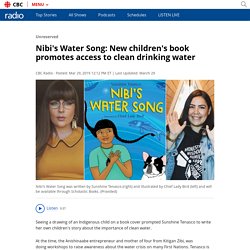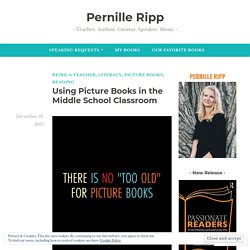

Why White Children Need Diverse Books. Nibi's Water Song: New children's book promotes access to clean drinking water. Seeing a drawing of an Indigenous child on a book cover prompted Sunshine Tenasco to write her own children's story about the importance of clean water.

At the time, the Anishinaabe entrepreneur and mother of four from Kitigan Zibi, was doing workshops to raise awareness about the water crisis on many First Nations. Tenasco is the founder of Her Braids, an organization committed to advocating for clean drinking water in Indigenous communities. Clean water is an issue that hits close to home for Tenasco. "Forty per cent of our community still doesn't have clean drinking water," she said. Tenasco also pointed out her community is right next to the French town of Maniwaki, where clean drinking water is accessible to all residents.
So when Tenasco walked into a bookstore and saw a book by Monique Gray Smith "with this little brown girl on the cover," she was inspired to write her own. That moment, Tenasco recalled, "kick started everything. " "I just busted out crying," she said. A Book Tasting is a Fun & Fresh Way to Introduce Students to New Reads. When it comes to reading, just like eating, some kids have pickier palates than others. The perfect way to pique their appetites for a good read is to have a book tasting!
It’s a great way to let young readers sample different authors, genres, and series. SOURCE: Sassy, Savvy, Simple Teaching Very similar to the popular read-dating activity, book tasting gives students the opportunity to sample some juicy reads in a short period of time and come away with a wish list of titles. No more choruses of “I don’t have anything to read!” Your book tasting can be as simple or as fancy as you’d like. SOURCE: Teaching With a Mountain View Students record the title and genre of their book on a note-catcher (see the resources below for free and low-cost ones). SOURCE: Miss Liberry Teacher For the next round, students either return their books and choose another one, rotate seats at the same table, or move to a different table. Using Picture Books in the Middle School Classroom.
We have hundreds of picture books in our classroom.

Ranging from board books, yes, books meant to be handled by babies, to beautifully illustrated picture book versions of classic stories; ours is a picture book classroom. And while I have written extensively about the power of picture books and how it can be used to hook resistant readers, to build a reading community, and all of the other incredible benefits of having them as part of our reading community, I have not really written about the usage of picture books as mentor texts. That is, until now, so here you are, some of the ways we use picture books to teach different concepts. Thematic statements Using a picture book as an example, see my list here, we read one aloud and work through the example together. Writers Craft The writing skills used in a great picture book are worthy of our close analysis. How does the author transition time or setting? Non-Fiction Focus Fluency and Expression Introductory texts.
Inferring. Like this: The Power of the Book Talk and Why School Libraries Matter. School Libraries Matter. Of course they do. However, here in the UK they are in trouble. Here’s the rundown: Between 2012 and 2014 alone 280 schools lost their qualified librarians. In addition, in 2015 over 54% of school libraries surveyed felt that they were underfunded and in 2016 over 1/5 of schools surveyed saw their library budget cut by over 40%. Even worse, in 2017 the Chartered Institute of Libraries and Information Professionals in the UK (CILIP) stated that England ranks 23 out of 23 OECD [Organisation for Economic Co-operation and Development] nations for teenage literacy, and is the only OECD nation where the literacy of 16–24 year olds is below that of people aged 55 and over.
In Nov 2017 Dawn Finch, past president of CILIP wrote a letter to Justine Greening, the Secretary of State for Education here in the UK, demanding the halt of school library closures. I was recently speaking to a group of eleven year old students in the library. School Libraries Matter.